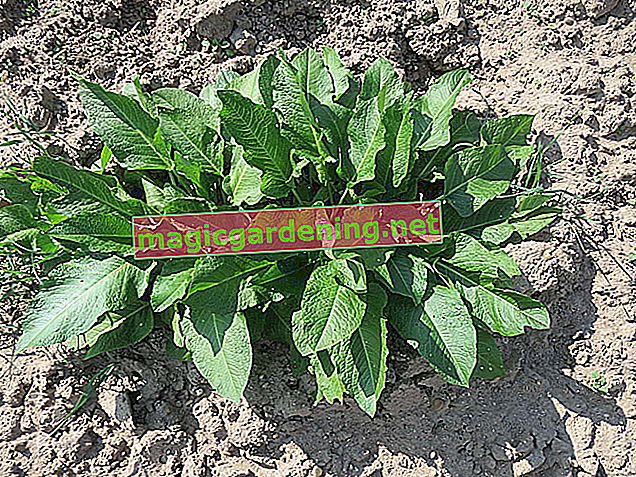
How to properly plant horseradish
Horseradish is usually neither sown nor pricked as a young plant. Rather, the side shoots called “Fechser” are cut off from the main root during harvest and stored. These are then planted in the ground next season so that a new taproot and foliage can develop on it.
also read
- Propagate horseradish in your own garden
- Harvest fresh horseradish from your own garden
- The season for fresh horseradish in the kitchen
What is the ideal location for horseradish?
Horseradish needs a lot of light and solar heat to develop. Most important, however, is a humus-rich and deep soil so that the long taproot of the horseradish can develop unhindered. A certain amount of sand in the soil has a positive effect on growth. The root of the horseradish gets more hot if it is cultivated in a slightly acidic and rather poor soil.
How to plant the horseradish fechser?
The correct planting depth and orientation of the fan are very important for harvesting a straight and strong taproot. Ideally, the Fechser should be buried so that the upper end is about five centimeters away and the lower end about 10 centimeters from the ground surface. In rows about 60 to 70 centimeters apart, the individual horseradish plants should be at least 40 to 50 centimeters apart.
How can you propagate horseradish?
Since horseradish propagates almost exclusively via the side roots called Fechser, these are removed annually during harvest and cut off in such a way that the upward orientation when planting can be recognized at the cutting angle. The Fechser should only be cleaned with a cloth and not washed under any circumstances, as otherwise rot may develop during winter storage in a cool, dark room.
When and where can you grow horseradish?
Horseradish fechers are mostly available from specialist plant shops or other gardeners and can be planted in the ground from around March by hand or with a so-called horseradish cutter. However, you should definitely keep a distance to other vegetables from the cruciferous family. In addition, horseradish depletes the soil relatively heavily, which is why it should only be grown in the same place in the garden about every three years in the crop rotation.
Tips & Tricks
In the south of Germany and Austria, horseradish is also known as “horseradish”. It is often served as a flavorful accompaniment to sausages and meat. In the domestic kitchen, horseradish can not only be freshly grated, but also dried and made into hot sauces with a very characteristic taste.








